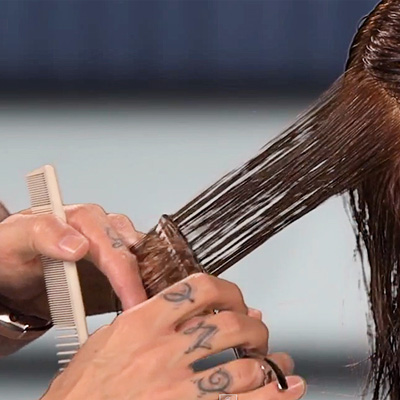Last updated: March 14, 2018
WATCH: Texturizing and Adding Movement to Dense Hair Using a Razor
Artist: Andrew Carruthers
Manufacturer: Sam Villa
VIDEO 
HOW-TO STEPS 
More from
Andrew Carruthers
YOU MIGHT LIKE THIS
-
Haircuts
Hot Tip: Creating Volume with a Razor
-
Hair
Sam Villa Textur® Volume Styling How-To
-
Hair
Razored Undercut Crop from TONI&GUY
-
Hair
Graham Webb “Modern Face Frame” by Nick Arrojo
-
Hair
Graham Webb “Modern Box Bob” by Nick Arrojo


TRENDING NOW!
-
BTC Hair Trend Report
The Biggest Haircut Trends of 2024
-
Blonde
Conditioner Before Toner: Common Hair Myth Debunked
-
Monthly Product Launch List
11 New Game-Changing Hair Launches To Add To Your Arsenal
-
Copper
What Is The "Cowboy Copper" Hair Trend? Here's What It Really Means...
-
Frizz
Straighten & Smooth 2A, Fine-Medium Density Hair
-
Copper
Muted Bronze
-
Haircuts
SHAG 101: The Dos And Don'ts
-
BTC Hair Trend Report
WWYD: How Hairstylists Are Navigating Inflation






